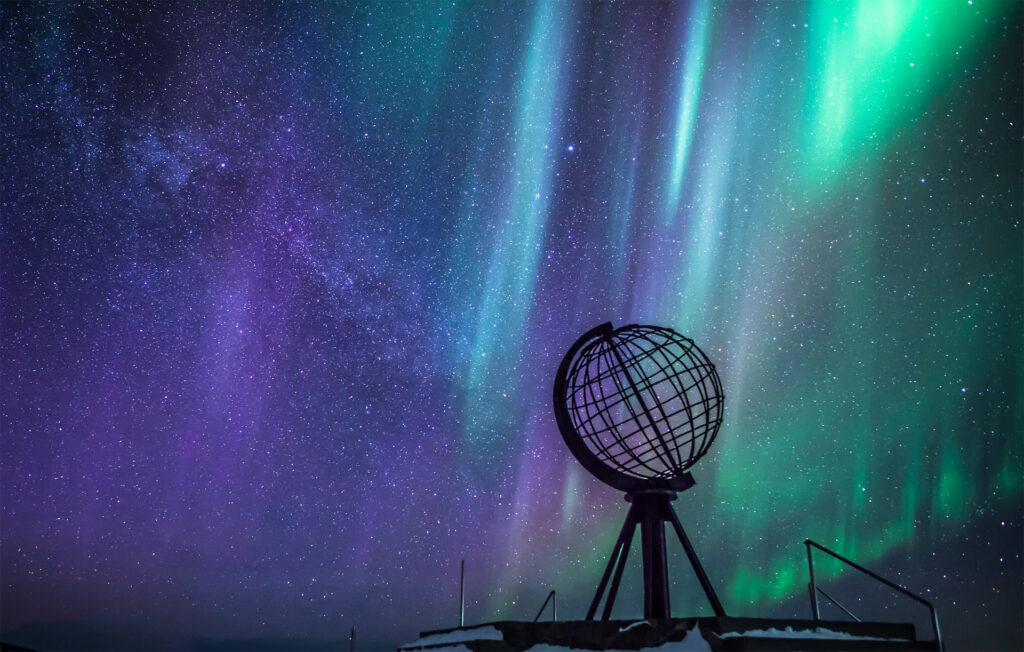Forecasting the Arrival of the Northern Lights
The enchanting display of the Northern Lights, or Aurora Borealis, is a celestial phenomenon that captivates the hearts of those fortunate enough to witness it. To embark on this celestial adventure, it’s crucial to understand where and when you can experience the magic of the Northern Lights.
Understanding Aurora Forecasting
Before planning your Northern Lights excursion, familiarize yourself with aurora forecasting. Online tools and apps, such as the Space Weather Prediction Center, provide real-time geomagnetic data and aurora forecasts. Monitoring the Kp index, a scale that measures geomagnetic activity, helps predict the likelihood of Northern Lights visibility.

Ideal U.S. Locations for Viewing the Northern Lights
While the Arctic Circle is the primary stage for the Northern Lights, several U.S. locations offer remarkable sightings.
-
Fairbanks, Alaska
Positioned beneath the Auroral Oval, Fairbanks is a Northern Lights hotspot. The optimal viewing season extends from late September to early April. Embrace the chilly Alaskan nights for a chance to witness the dance of the auroras against the Arctic landscape.
-
Denali National Park, Alaska
With minimal light pollution, Denali National Park provides a pristine backdrop for Northern Lights viewing. Visit during the winter months for extended darkness and increased chances of witnessing the auroras.
-
Upper Peninsula, Michigan
Surprising to some, the Upper Peninsula of Michigan offers sporadic Northern Lights displays. Keep an eye on geomagnetic activity charts for opportunities to witness this celestial marvel.

International Destinations for Northern Lights Sightings
-
Tromsø, Norway
Situated within the Arctic Circle, Tromsø in Norway is a premier destination for Northern Lights enthusiasts. The season runs from September to April, with peak activity during the winter months. Explore the stunning landscapes of Tromsø while chasing the vibrant hues of the auroras.
-
Abisko, Sweden
Known for its clear skies and prime location within the Aurora Oval, Abisko in Sweden is an ideal destination for aurora chasers. Visit between September and March for the best chances of witnessing intense Northern Lights displays.
-
Reykjavik, Iceland
The capital city of Iceland, Reykjavik, offers a unique urban setting for Northern Lights viewing. Combine city exploration with aurora hunting during the season, which spans from late September to mid-April.

Considering a Northern Lights Tour: Is It Worth It?
Pros of Northern Lights Tours
Expert Guidance
Tour operators provide knowledgeable guides well-versed in Northern Lights behavior.
Optimal Locations
Tours often take you to remote locations with minimal light pollution for optimal viewing conditions.
Comfort and Convenience
Tours provide transportation, reducing the hassle of planning and navigating unfamiliar territories.
Cons of Northern Lights Tours
Cost
Tours can be expensive compared to independent travel.
Limited Flexibility
Fixed schedules may limit your ability to stay longer in a specific location.
Crowded Spaces
Popular tours can result in crowded viewing areas.

Optimal Timing for Observing the Northern Lights
-
Midnight to 2 AM
The prime time for Northern Lights visibility is typically between midnight and 2 AM. During these hours, the night sky is at its darkest, enhancing the brilliance of the auroras. Plan your aurora hunting adventures during this window for the best chances of witnessing the celestial display.
-
Solar Maximum Influence
Keep an eye on the solar cycle, which follows an approximately 11-year pattern. During the solar maximum, Northern Lights activity is more frequent and intense. The last solar maximum occurred in 2014, and subsequent years still offer elevated chances of witnessing vibrant auroras.
Frequently Asked Questions
Q: When is the best time to see the Northern Lights?
A: The optimal time is during the winter months, from late September to early April, with peak activity around December to February.
Q: Can you see the Northern Lights in the U.S.?
A: Yes, locations like Fairbanks, Alaska, and the Upper Peninsula of Michigan offer sporadic Northern Lights displays.
Q: Are Northern Lights tours worth it?
A: Northern Lights tours provide expert guidance and optimal locations but can be costly and limit flexibility.
Q: What factors influence Northern Lights visibility?
A: Geomagnetic activity, dark skies, and clear weather conditions are key factors affecting Northern Lights visibility.
Q: Is there a specific time of night best for Northern Lights viewing?
A: The prime time is typically between midnight and 2 AM when the night sky is at its darkest, enhancing aurora visibility.






